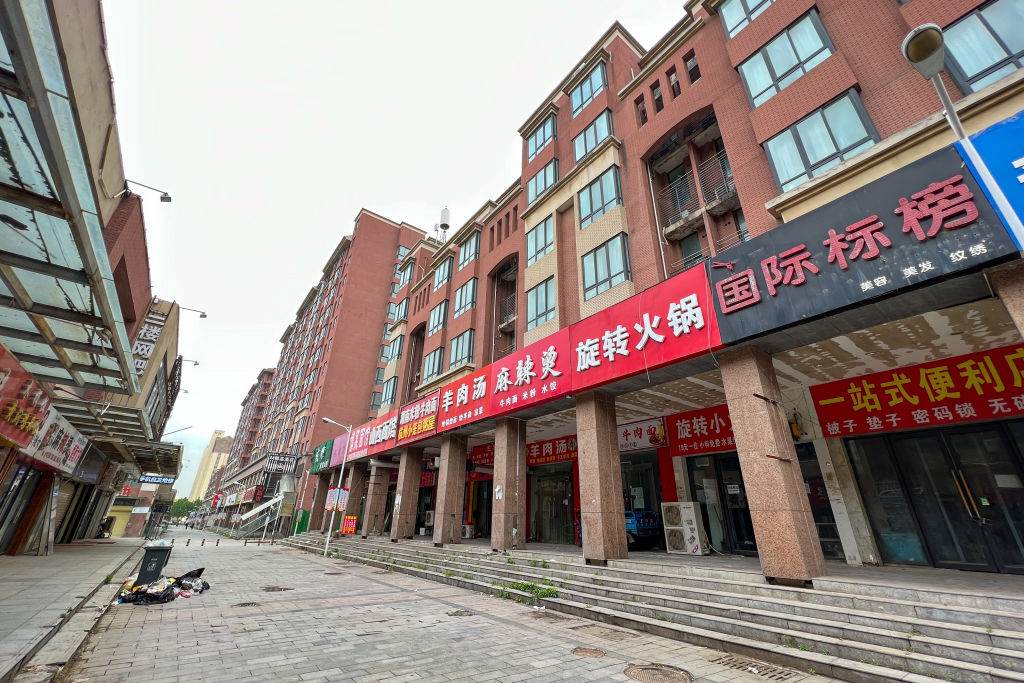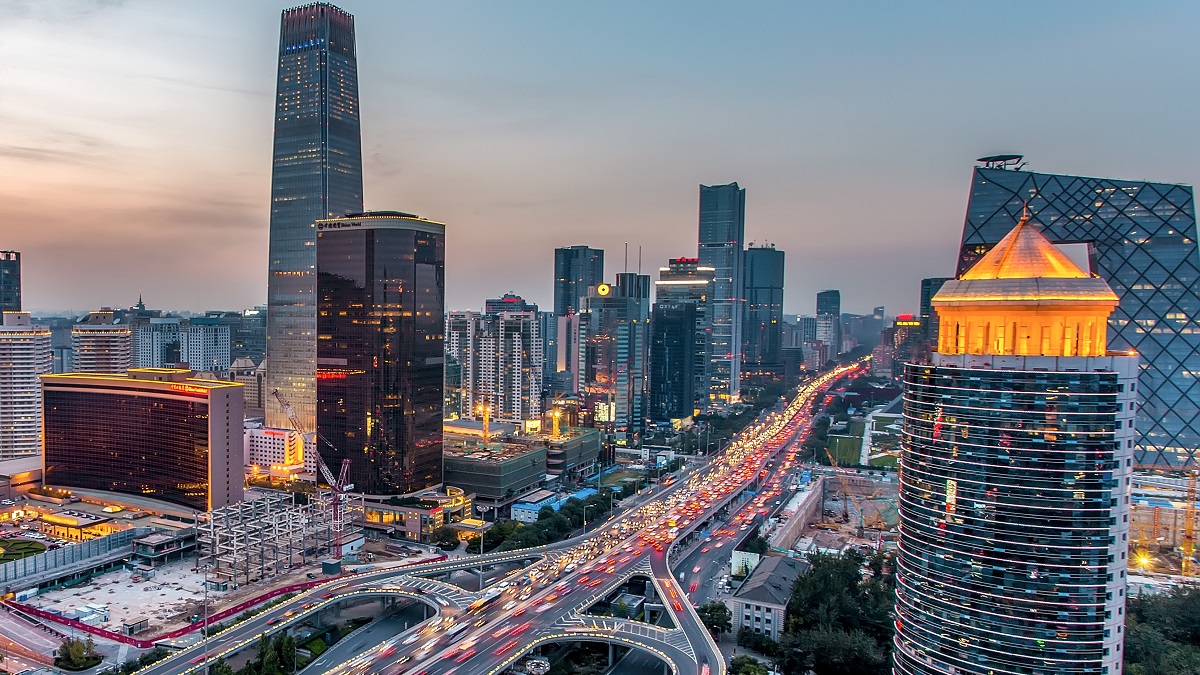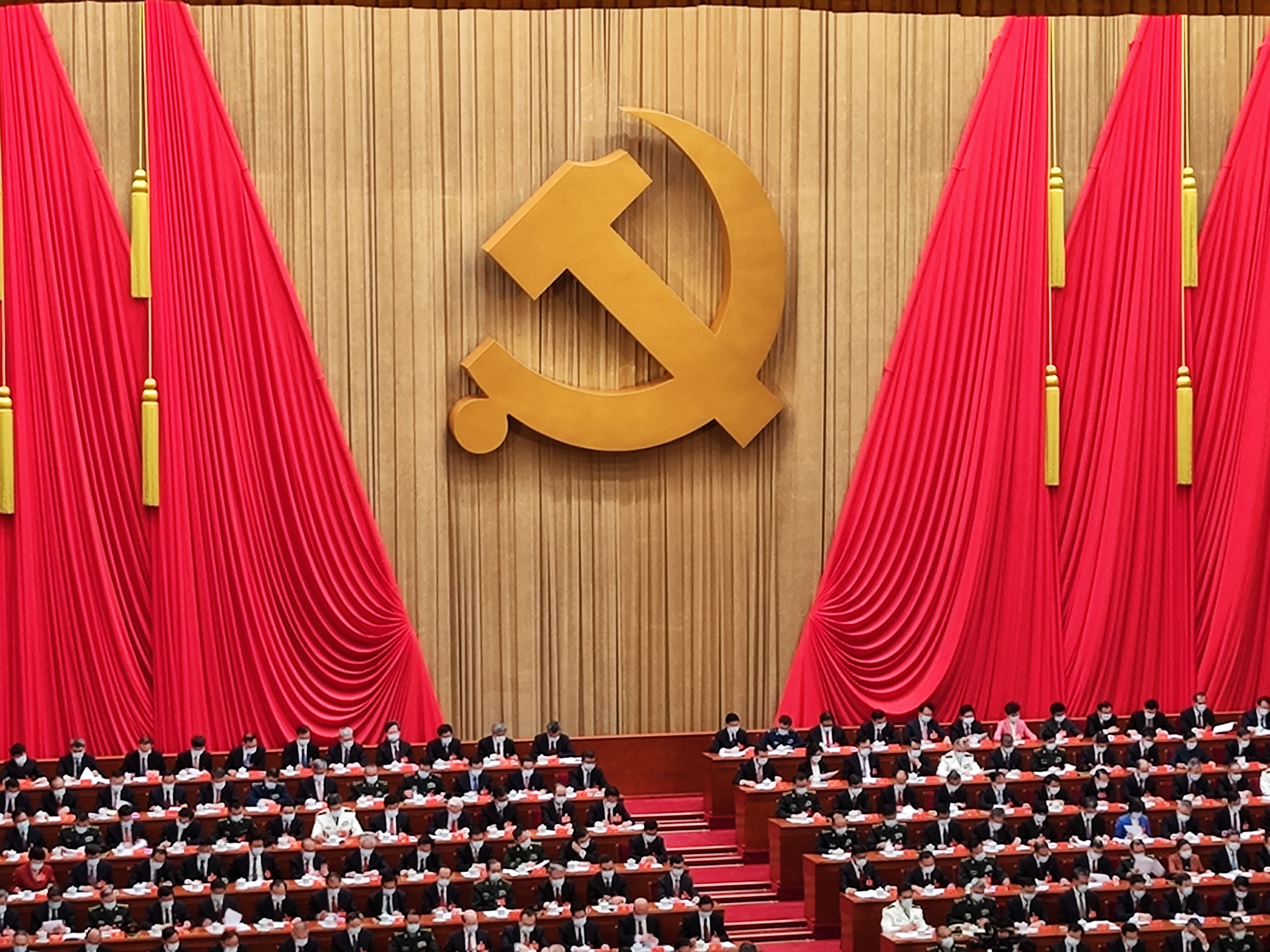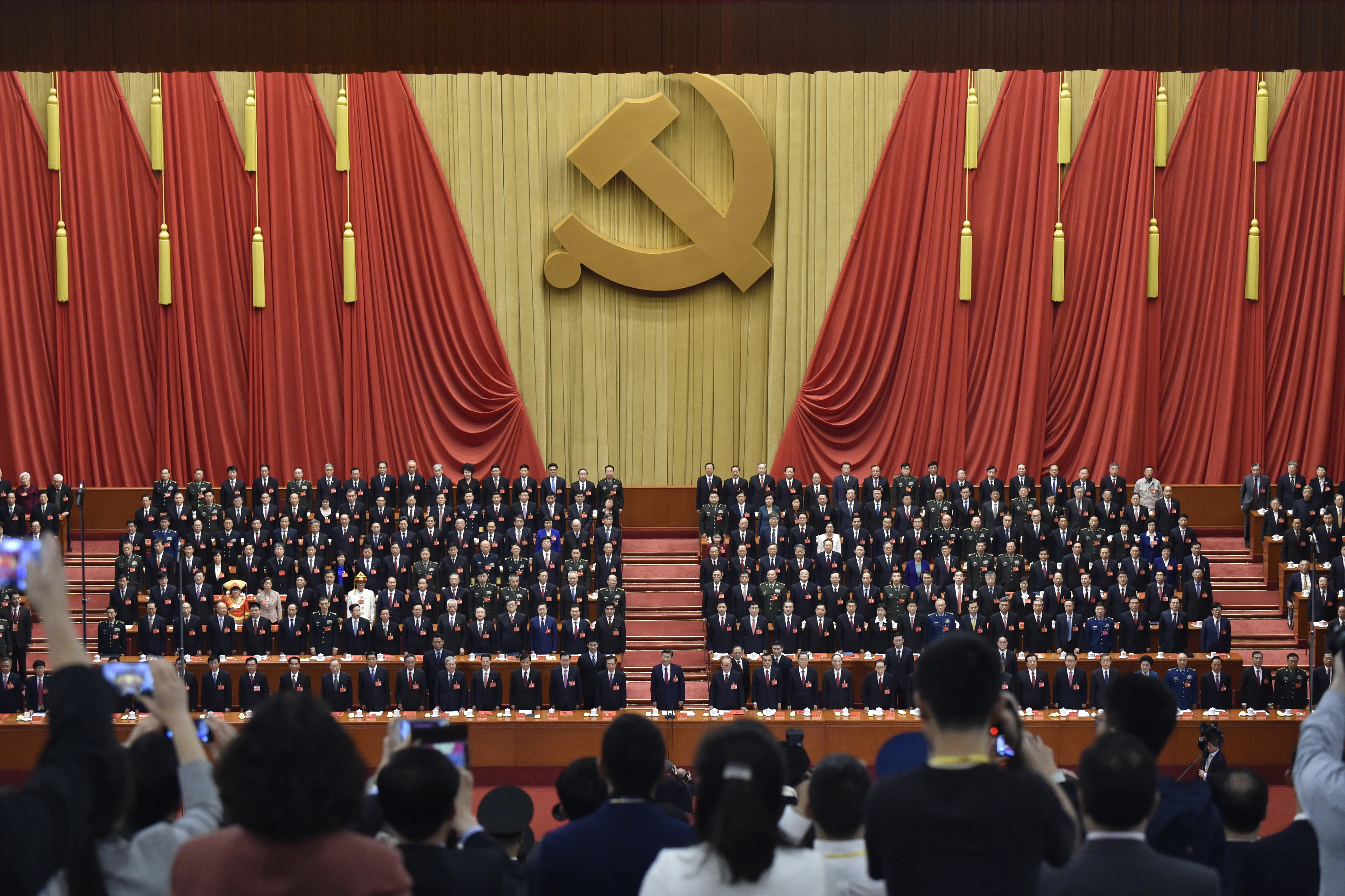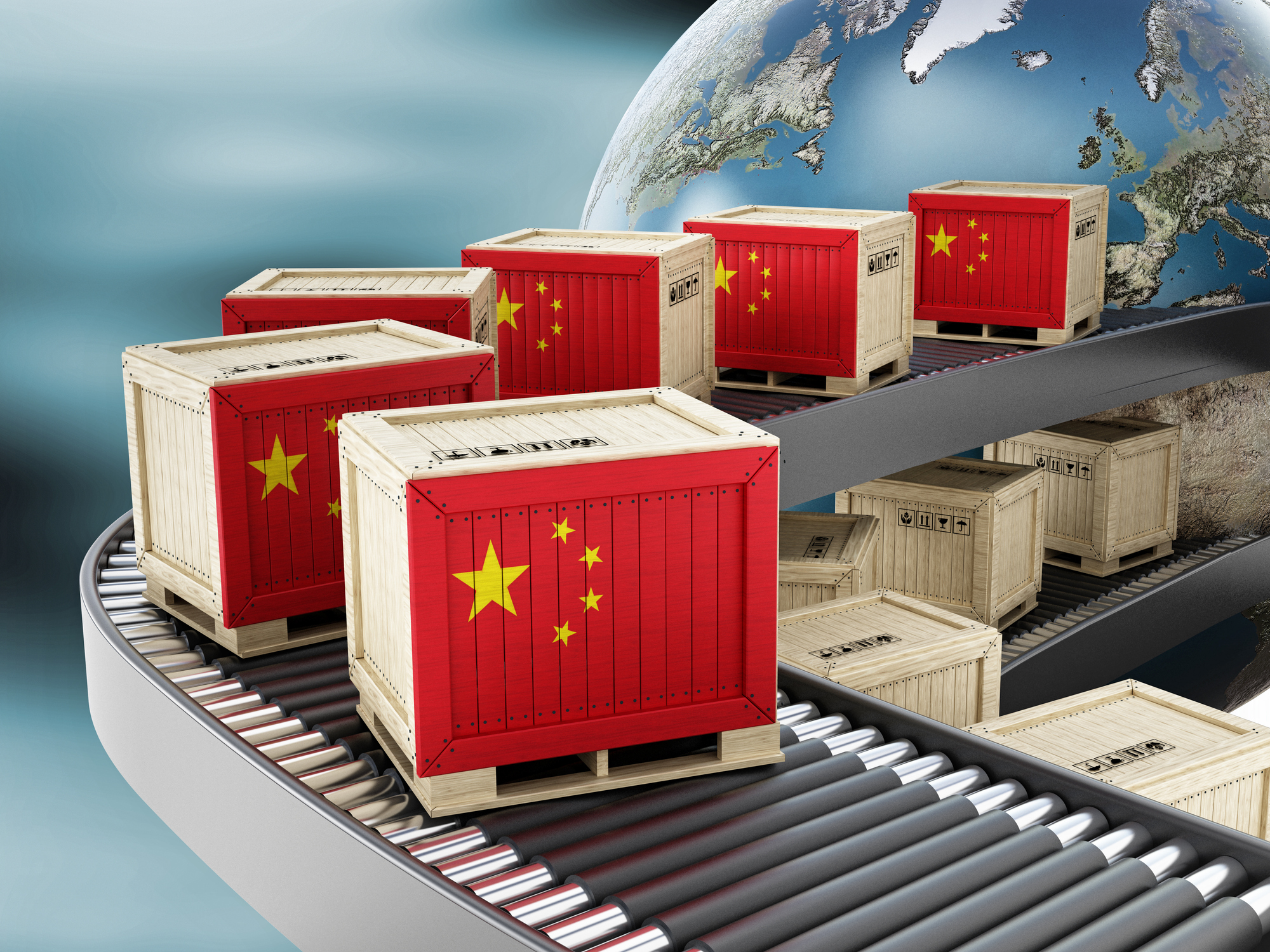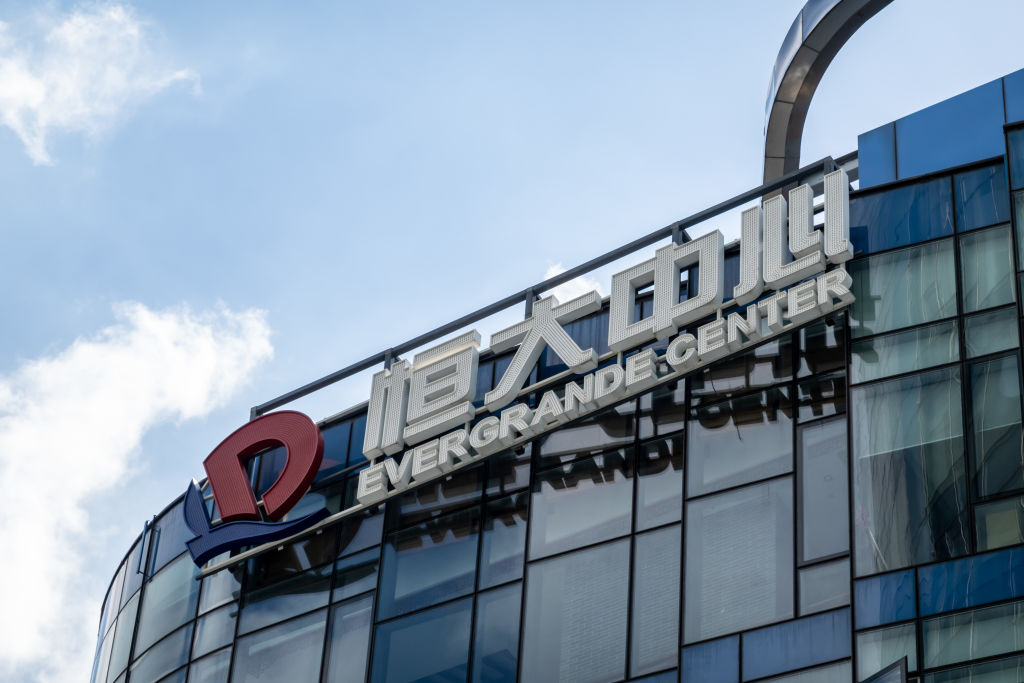
The Chinese Economy at a Crossroads: The Impact on Japan of the Slowdown in China’s Business Conditions
July 18, 2024
R-2023-127E
Economic growth in China is slowing dramatically, despite no substantial deterioration in the economic fundamentals (labor, capital, and productivity). Behind this lies not a market failure but rather a failure in policy. The Xi administration was officially inaugurated and launched in March 2013. At the time, the Chinese economy was experiencing a supply surplus. Today, 11 years on, it is suffering from a lack of demand. At the National People’s Congress held in March 2024, Premier Li Qiang clearly stated in his Report on the Work of the Government that China would need to overcome this lack of demand. However, no specific policies were presented.
Why has this lack of demand become such a serious problem in China? The direct cause was the strict zero-COVID policy implemented by the Chinese government in response to the COVID-19 pandemic. The virus’ characteristics were not fully known in the early stages of its mutation, and no medications were available. The high mortality rate led countries in Europe, the United States, and other advanced countries to implement lockdowns. As time went on, the routes by which COVID-19 infections occur became well understood and medications were developed. As a result, people stopped panicking over the pandemic. By contrast, the Chinese government persisted in its zero-COVID policy, including strict lockdowns, until December 2022.
China’s zero-COVID policy not only involved isolating people at home or in dedicated quarantine facilities but also closed down lifelines such as restaurants and supermarkets. This resulted in several million medium-sized, small, and micro-enterprises being driven to bankruptcy. When the COVID-19 pandemic came under control at the start of 2023, the Chinese economy was expected to make a V-shaped recovery. However, the bankrupt medium-sized and small enterprises were not rebuilt, leading to an anemic economic recovery and L-shaped growth. The weakness of the Chinese recovery was listed as Risk 6 in the list of global risks published by the Eurasia Group, a U.S. organization, in January 2024.
To preempt my conclusion, the Chinese economy has gone from experiencing a supply surplus to suffering from a lack of demand. China’s economic growth is likely to continue to slow until a balance is achieved between supply and demand. The slowdown in the Chinese economy is not, in fact, due solely to the impact of the COVID-19 pandemic. Rather, the policies favoring state-owned enterprises and the revision and enforcement of China’s counter-espionage law under the Xi administration have also substantially impeded the economic recovery.
The Possible Japanification of China
Some experts forecast that the recent implosion of China’s real estate bubble will result in it falling into the same rut as Japan did after its bubble burst three decades ago. It is said that history repeats itself, but this is not simple repetition. Three decades ago, Japan’s asset bubble burst. The fallout from this collapse in 1998 spilled over into the financial system, leading to the successive bankruptcies of the Long‐Term Credit Bank of Japan, Nippon Credit Bank, Yamaichi Securities, and other major financial institutions. After the asset bubble burst, the Japanese economy was plagued by deflation, entering what is referred to as the Lost Decades.
However, Japan’s financial crisis did not result in social instability. This was not only because Japan’s system of deposit insurance was useful for handling the bad debts held by financial institutions but also because it was secured by the government itself. Japan may have lost three decades, but it did not lose its technological expertise.
During the 1990s, after Japan’s asset bubble collapsed, Chinese government officials and researchers came to Japan to learn about its approach to economic policy and ways of handling bad debt. In other words, experts in China should have been expected to learn from Japan’s failure. It was thought that China would never repeat the same mistakes as Japan.
The reality was quite the opposite. Most of the experts who visited Japan in the 1990s to learn about the cleanup after the collapse of the asset bubble have already retired. Most importantly, China is now subject to the strictest regulation of the freedom of speech in 40 years. China’s bookstores are stacked with works related to Japan’s Lost Decades, but no authors are permitted to suggest on social media that China risks falling into the same rut. Almost all liberal thinkers maintain a steady silence. The improvement of policies through expert discussion and debate is a basic and crucial aspect of policymaking. The formulation of correct policy is not possible through only the deferent agreement of scholars employed to toe the party line.
Comparing Japan’s past three decades with present-day China, the greatest difference lies in the possibility that the collapse of China’s real estate bubble may also lead it to lose its technological expertise. Why would China lose its technologies? At the same time as the bubble bursts, U.S.-China antipathy has also intensified. Foreign companies have transferred their factories, one by one, from China to other developing countries. This has only been exacerbated by the revision and enforcement of China’s counter-espionage law. These revisions have expanded and blurred the definition of espionage, causing unanticipated stress for foreign businesspeople.
Local Chinese companies have substantially acquired middle- and lower-end technologies, but tend to lack high-end technologies. This can be seen in the move by successive Taiwanese semiconductor manufacturers to build new factories in Japan and the U.S. Major Japanese companies have also closed some factories in China, and companies are progressively moving away from China.
Some experts argue that decoupling from China is impossible and that what is happening is de-risking. It was U.S. President Biden who first characterized the move away from China as de-risking. To be precise, whereas decoupling refers to a complete separation, de-risking is only partial separation. In other words, “zero China” is not possible, so companies hope to proceed “with China.” Whichever the case, if the current trend continues, then China is likely to lose the chance to acquire high-end technologies.
In this context, China may face, not Japanification, but an even more complex and difficult situation.
The Fallout from COVID-19
The three-year COVID-19 pandemic has ended and some of its aftereffects have already emerged. The full extent of the fallout, however, is still to be seen. As described above, many medium-sized, small, and micro-enterprises were driven into bankruptcy by the zero-COVID policy implemented in response to the pandemic. This led to a rapid rise in the number of young people unemployed. This, however, is a visible effect of the pandemic. The invisible effects may be even more serious.
Many Chinese people have lost their sense of hope for the future of China. Since the COVID-19 pandemic struck, China has seen the progressive overseas immigration of members of its wealthy, middle-class, and working classes. The wealthy and middle classes could be considered the winners in Chinese society, but they are turning their backs on their homeland to move overseas. Because working-class Chinese do not have enough assets to obtain official visas, they leave for countries that do not require visas for Chinese passport holders, then travel through Mexico, ultimately bound for the U.S.
Upon interviewing these new immigrants, almost all of them responded that they emigrated because they no longer had hope for their lives inside China. The situation, however, is more complex than this.
According to the macroeconomic data published by the Chinese government, real GDP grew by 5.2% in 2023. Despite this steady recovery in the world’s second-largest economy, why are people turning their back on their homeland to move overseas? In the context of the nationalistic education taught in China, the antagonistic U.S. is the rival of the Chinese government and, in some cases, its enemy. Why, then, are the supposedly brain-washed youth of China choosing to emigrate to the U.S., Canada or other U.S. allies, which should be their rivals?
Another aspect of the fallout from COVID-19 is the rapid increase in the proportion of young people who chose not to marry or have children. According to the official data published by the Chinese government, China’s total population began to decline in 2022–2023. Structurally speaking, the population bonus was the pillar on which China’s economic growth was built. A decline in China’s total population means that the population bonus has become a population onus. Why have young people stopped getting married and having children? The reason lies in the shrinking disposable income of households, after three years of the COVID-19 pandemic. The unemployment rate remains persistently high, and the salaries of employed workers are decreasing. There are increasing reports of wage cuts for local government officials due to the deficits recorded in local government finances. Owning a home and a car are prerequisites for young people to marry in China. Many young people are currently unable to purchase a home or a car.
Even among those who married before the COVID-19 pandemic, an increasing number of young couples have decided not to have children due to living pressures. A certain video spread across Chinese during the COVID-19 crisis. In the video, official-looking people clad in white protective clothing were attempting to transport the residents of a private home in Shanghai to a specialized quarantine facility, despite the fact that their PCR test results had come back negative, because another resident in the same area had tested positive. The residents resisted, refusing to leave, upon which one of the officials in protective clothing threatened, “If you don’t come with us, your children may have trouble getting into a good school in the future!” In response, a resident replied: “We are the last generation. Thanks!” In other words, they have no children, so they are not scared by the threat. These words—“we are the last generation”—became a catchphrase in China that year.
As can be seen in this example, people’s faith in the government has crumbled, and they have lost hope in the future. The Xi administration seems to be trying to strengthen its unifying force in China, but this force has clearly declined due to the zero-COVID policy.
The Strength of Systems Tested in Countries Under the Rule of Man
The centralization of power in Chairman Xi has progressed more than anticipated over the past decade. At the same time, the function of the government organization has been impaired. A review of the various policies adopted by the Xi administration reveals that practically all are self-destructive in terms of both domestic government and foreign diplomacy. The primary drivers of the Chinese economy are private-sector companies and foreign-invested companies, but the business base of these companies is being shaken by fines targeting major private-sector companies and the revision and enforcement of China’s counterespionage law. The same can be said of foreign diplomacy. China stands in opposition to Japan, the U.S., and other G7 countries that have been cooperative toward China so far. After the war in the Ukraine began, China not only failed to criticize the invader, Russia, but actually provided it indirect support. The integrity of China as a great nation is in question.
The key element for the Xi administration is the Belt and Road Initiative. Behind the original formulation of this initiative was its conception not as part of the national security strategy but as a framework for China to export its excess internal production capacity. As it developed, the scope of the initiative spread unbridled to include a range of other things. The Xi administration has invested a massive amount of capital in improving infrastructure in various foreign countries. This did not seem to present such a problem while the economy was growing steadily, but the sudden slowdown in China’s economy since the COVID-19 crisis has left it with limited financial resources to expend. The Belt and Road initiative is not going away, but it will have to be downsized significantly.
The most incomprehensible aspect of the Xi administration is its crackdown on Hong Kong. When Hong Kong reverted from the U.K. to Chinese rule, it obtained a promise from China that the policy of “one country, two systems” would continue unchanged for 50 years. This promise was broken in only a little over two decades. Hong Kong’s elite are emigrating en masse to the U.K. and former Commonwealth countries. Beijing has not only lost valuable talent but also lost Hong Kong’s status as Asia’s largest international financial center. Even within China, Hong Kong is characterized with irony as the ruins of a former international financial center.
In this way, all indicators point to the contradictions that riddle the Xi administration’s policies and the chaos engendered by them. Why did this happen? What is the problem? For the past four decades, China has rushed to achieve economic growth at the expense of creating systems. Specifically, despite the establishment of a substantial number of laws, these laws are not operating as designed. This is because the Communist Party is beyond the law. Under the Xi administration, the centralization of power in Chairman Xi has resulted in the lower echelons of the government organization ceasing to function. The lateral connections between the Communist Party and government bodies, in particular, have been broken, and even a small issue can blow up into a major problem. The Xi administration’s failure lies in the weakness of its systems. For 10 years, the administration has pursued a campaign to stamp out corruption, but cases of corruption continue to emerge among senior officials. The anti-corruption campaign is at risk of turning into an endless game.
For the Xi administration, economic growth is the sole basis that guarantees the administration’s legitimacy, and the continuation of the current slowdown in economic growth may corrode the administration’s strength. At this point, it is vital that China returns to its path of reform and opening up.
The Impact on Japan of the Slowdown in China’s Business Conditions
Although its attractiveness as a manufacturing center for re-exporting has been diminished by increasing antagonism with the U.S., China remains an attractive market for Japanese companies. To take the automobile market as an example, over 30 million cars are sold each year in China. For reference, approximately 4–5 million cars are sold in Japan each year. The situation is similar for machinery, electronic devices, and other products. If China undergoes a prolonged slump in business conditions, it is easy to imagine that this will impact the performance of Japanese companies.
At the same time, the standoff between China and the U.S. has brought unexpected benefits for Japan. A semiconductor network has been created, centered on Japan and the U.S., to contain China. Taiwanese semiconductor manufacturers, in particular, no longer build factories in China, choosing rather to construct large-scale semiconductor factories in Japan. Meanwhile, the U.S. semiconductor manufacturer IBM has entrusted production of its leading-edge power semiconductors to the Japanese company Rapidus. Scientists and engineers sometimes go as far as saying that the country that controls semiconductors controls the world. Until now, the research, development, and manufacture of semiconductors in Japan has been lagging behind the rest of the world, partly due to Japan’s failures in industrial policy. However, it is possible that Japan may catch up in the not-too-distant future, thanks to partnerships with Taiwanese and U.S. companies.
The issue that Japan must consider is how to build strategies for working with China. Specifically, while it is necessary for Japan to reacknowledge China’s position as a market, it also faces the issue of bringing leading-edge technologies back onshore. Until now, Japanese companies have progressively shifted industrial manufacturing bases offshore due to concerns over high personnel expenses and labor shortages. Now, due to the unforeseen depreciation of the yen, personnel expenses within Japan are no longer always higher than overseas. Concerns over labor shortages remain, but high-tech manufacturing does not necessarily depend on labor. AI automation is key. As in any era, it is vital to apprehend risks as opportunities for change. We may be witnessing an important opportunity for change in Japan’s economy and its industries.
Questioning the Approach to Japan-China Relations
Half a century has passed since the normalization of Japan-China relations. The past 50 years have not always been smooth sailing. To borrow the words of former prime minister Tanaka Kakuei and former premier Zhou Enlai, Japan and China are two countries separated by only a narrow strip of water. Their mutual importance is clear, so why is the Japan-China relationship so unstable? Problems so far are thought to be due to factors including differing perspectives on history and antagonism over territorial rights to the Senkaku Islands and the East China Sea.
These are all important issues for both Japan and China, but they are not the underlying cause. All of these issues could be resolved through dialogue, yet they have not been brought to a satisfactory resolution. Recently, there has been almost no dialogue at all between the governments of the two countries. There must be something that is obstructing an improvement in the Japan-China relationship. Even experts have not attempted to reveal the nature of this obstruction.
What, then, is the factor that is preventing an improvement in the Japan-China relationship?
It is, simply put, a difference in value perceptions. People with different value perceptions can make conversation, but they cannot engage in dialogue, let alone cooperate to resolve issues. It can only be concluded that neither country has fully comprehended this fact.
Value perceptions are our benchmarks and standards for determining whether things are good or bad. Differences in value perceptions make it almost impossible to reach a consensus on an issue through discussion. It is not even necessary to review the whole history of the Japan-China relationship to understand that the two countries are not in the same boat: this is a relationship between two countries that inhabit very different worlds. This is not to argue that one set of value perceptions is better or worse, but simply to point out that they are different.
Looking ahead to the future of the Japan-China relationship, from this standpoint, no significant improvement can be expected in the relationship between the two countries. Given the uncertainty in international affairs, it is likely that Japan and China will play very different, and increasingly oppositional, roles. It is therefore important to share a sense of urgency regarding the Japan-China relationship, rather than the stale and facile international relations doctrine of Japan-China friendship. Japan and China should begin to talk about the damage and how to manage the risks that would occur to each country if they should come into intense opposition.

